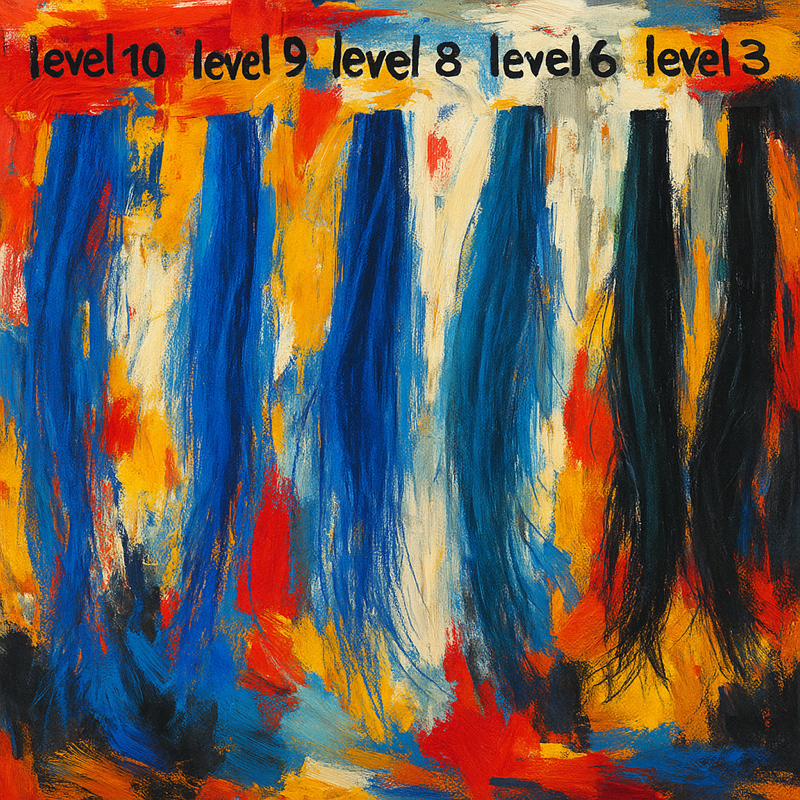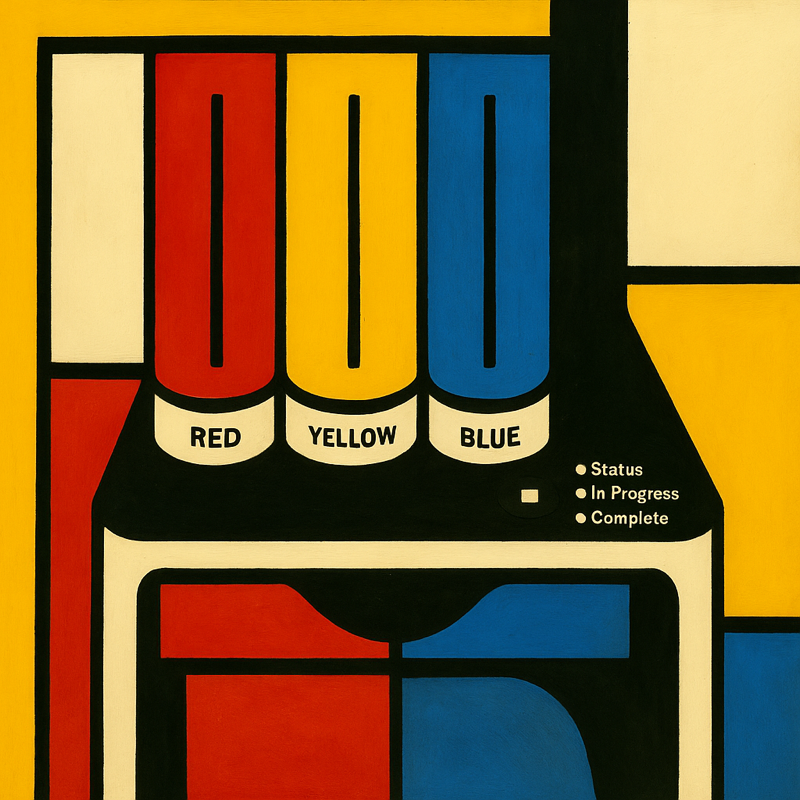When using our coloring device and app, you'll discover a wide range of shade options across multiple color series and styles. Each shade offers different pigment intensities and performance, helping you achieve your perfect hair color.
To get the most satisfying results, two key factors matter:
- Your current hair base level (how light or dark your natural hair is)
- The color series and shade number you choose — ranging from deep and saturated to light and airy
We'll walk you through:
- How to identify your hair base level
- The differences between each color series and how to choose them
- How to read shade numbers to understand its intensity, coverage, and longevity
Understanding Your Hair Base Level
Your hair's base level affects how a shade shows up. For example, a pink shade may look vibrant rose pink on light blonde hair but barely noticeable on dark brown.
We classify hair levels from level 10 (lightest) to level 3 (darkest).
Refer to the photo below to estimate your current hair level—this is the first step to choosing the right shade!

The hair base levels from level 10 (lightest) to level 3 (darkest).
Here's how standard shades like red (#4), yellow (#25), and blue (#84) appear across hair levels 3 to 10.



As the hair base becomes darker or warmer, the shade is more heavily influenced by the undertone, which can significantly affect the final color result.
Understanding the Five Shade Series
We divide all shades into five pigment intensity series, from most to least concentrated:
Concentrate → Standard → Light → Pastel → Mist
Each series varies in pigment intensity, which directly affects:
- Color Longevity — how long the color lasts through washes
- Coverage Power — how well it covers the original hair color, especially darker tones
👇 Here's a side-by-side comparison of each color series to help you choose the one that fits your needs:

💡 Quick Tip: The richer the color, the better the coverage and fade resistance. But remember—vibrant shades require lighter base hair level to achieve true-to-swatch results.
Similar Colors, Big Differences
You might find multiple similar shades across different series — so what's the difference?
They can differ significantly in coverage and fading speed.
Let's break it down.
Coverage Comparison
Shades that appear earlier on the shade chart generally offer stronger coverage.
In other words, similar-looking shades may perform similarly on level 10 hair, but their coverage can vary significantly on darker base levels such as level 7 or below.
📌 Example Comparison: #85 vs. #86 vs. #87 — coverage performance on level 10 vs. level 7 hair.

Longevity Comparison
Shades that appear earlier on the shade chart generally last longer.
In other words, even if colors appear similar on the swatch, their fading rates can differ significantly.
For example, during the initial washes (1–5 times), you'll notice that:
- Shades positioned later within the shade chart also fade more quickly.
- Additionally, on deeper or warmer hair base levels, the underlying tones will gradually show through as the color fades.

More tips:
- Want true-to-swatch results? Lighten your hair to level 9–10 for best accuracy.
- Don't forget — you can also upload a photo you love in the app to extract colors and quickly find your recommended shade!
Let your color journey begin!

